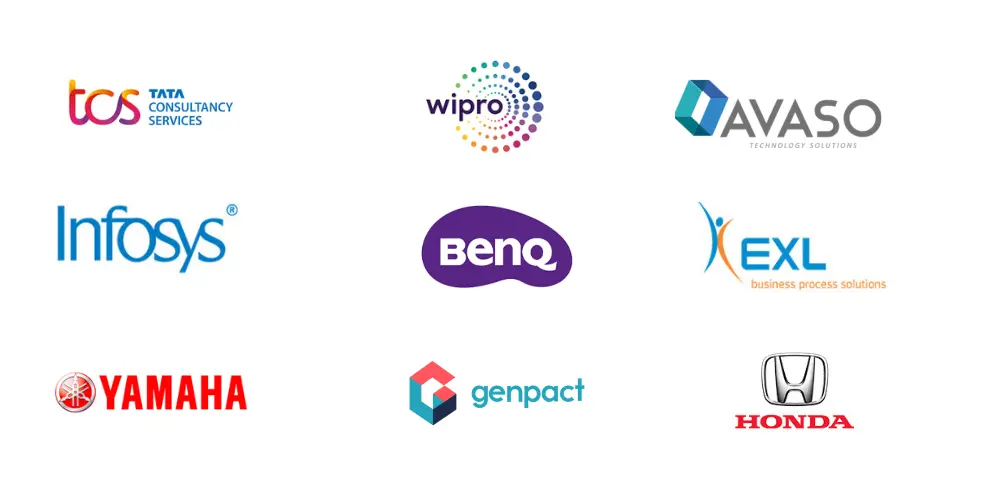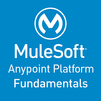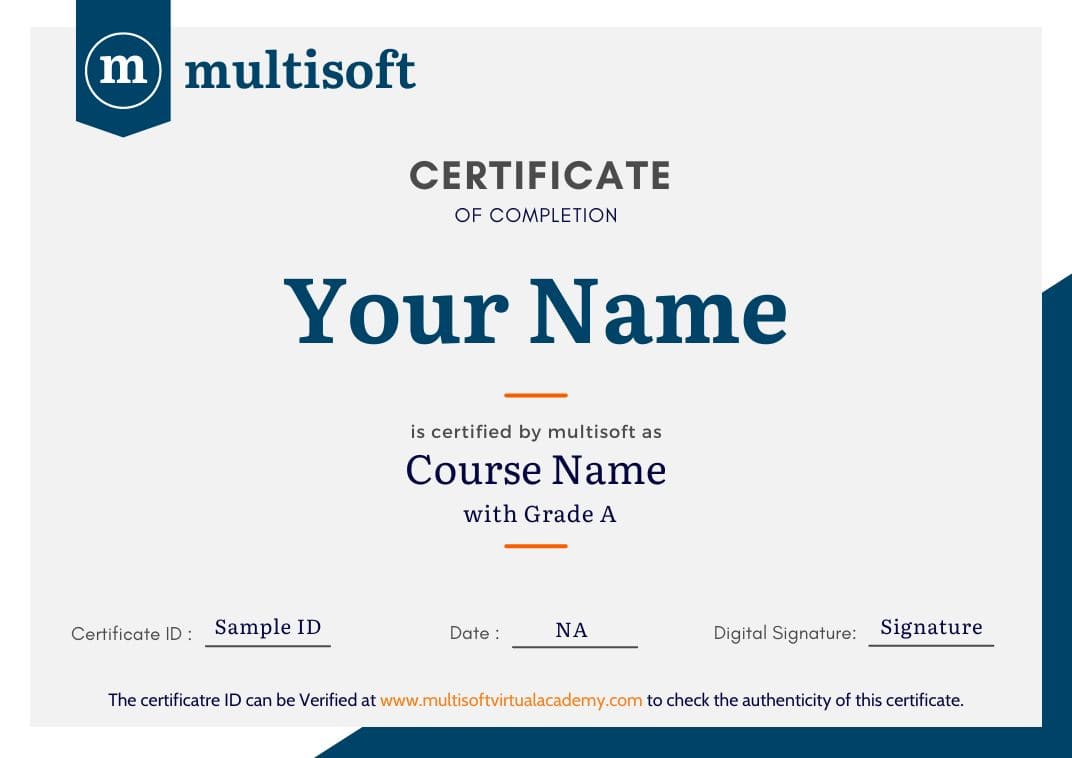Trusted by enterprises across the globe


Designed for all your training needs

Flexible On-Demand Group Learning
Flexible, corporate learning for groups, accessible anytime, anywhere.

Instructor-Led Live, Online Training
Real-time, interactive classes taught by SME via web conferencing.

Independent Self-Paced Learning
Individual learning at your own speed, with access to digital materials.

Customized On-Site Training
Customized, face-to-face training sessions delivered at your location.
Curriculum Designed by Experts
MySQL for Database Administrators Corporate Training offered by Multisoft Virtual Academy is designed for organizations aiming to strengthen their database administration capabilities. This instructor-led program covers MySQL installation, configuration, performance tuning, security management, and data backup strategies. Delivered by certified trainers with real-world expertise, the course empowers teams to manage enterprise-grade MySQL environments confidently.
Through interactive sessions, practical labs, and real-time use cases, your team will gain in-depth knowledge of MySQL’s architecture, replication, monitoring tools, and troubleshooting techniques. Whether you’re upgrading existing skills or preparing for a high-demand project, this corporate training ensures your IT professionals are well-prepared to meet business-critical database challenges. Flexible scheduling and customized content make it ideal for teams of all sizes and skill levels
MySQL for Database Administrators Training is a specialized program designed to teach professionals how to install, configure, manage, and secure MySQL databases. It covers core administrative tasks such as user management, backups, performance tuning, and replication. Ideal for aspiring DBAs and IT professionals, the training equips learners with the practical skills needed to ensure database efficiency, security, and reliability in real-world environments.
- Administration and Course Materials
- Course Structure and Agenda
- Delegate and Trainer Introductions
- Introduction to MySQL
- The versions of MySQL
- MySQL Database Server Releases
- MySQL Database Versions
- The MySQL Server
- MySQL Client Connections
- MySQL Client Programs
- MySQL Client Libraries
- The MySQL Command Line Tool
- The MySQLadmin Program
- Installation of MySQL Workbench
- Connecting to MySQL Workbench
- MySQL Workbench Screens
- What is Metadata?
- The MySQLshow Client Program
- The SHOW and DESCRIBE Commands
- Obtaining data from the INFORMATION_SCHEMA
- MySQL 8 INFORMATION_SCHEMA Changes
- Generate Statements using the INFORMATION_SCHEMA
- Start and stop the MySQL Server
- Status Files
- An Overview of MySQL Storage Engines
- MySQL Server Options and Variables
- MySQL Status Variables
- Configure the MySQL Enterprise Edition Auditing Plugin
- SQL Modes
- The General Log
- The Error Log
- The Slow Query Log
- The Binary Logs
- Communication Protocols used to connect a Client to the Server
- The SQL Parser and Storage Engine Tiers
- Installing and Uninstalling Plugins
- How MySQL Uses Disk Space
- How MYSQL Uses Memory
- Features of the InnoDB Engine
- The System Tablespace
- Transactions and Referential Integrity
- Physical Characteristics of InnoDB Tables
- System Tablespace Configuration
- File per Table Tablespace
- Log File and Buffer Configuration
- Undo Logs and Undo Tablespaces
- General Tablespaces
- Buffer and Lof File Configuration
- Temporary Table Tablespaces
- InnoDB Status
- InnoDB Shutdown Options
- Check Engine Usage
- The MYISAM Engine
- The Merge Engine
- Other Engines: Archive, Memory, Blackhole, CSV, Spider, MyRocks
- Mixing Storage Engines
- Table Maintenance Operations
- Check Table
- Repair Table
- Analyse Table
- Optimize Table
- MySQL Check
- Repair InnoDB Tables
- MyISAM Table Maintenance and Repair Utilities
- The Advantages and Disadvantages of Different Backup Methods
- Backup Tool Overview
- What Should be Backed up?
- Binary Backups of MYISAM Tables
- Binary Backups of InnoDB Tables
- Performing Hot Backups
- Performing Recovery
- Import and Export Operations
- Export and Import using SQL
- Export from the Command Line using MySQL dump
- Import from the Command Line using MySQL import
- Additional Backup Tools
- Introduction
- User Accounts
- Creating Users
- Renaming Users
- Change a User Password
- Dropping Users
- Granting Privileges
- The User Table
- Connection Validation
- Password Validation Plugins
- Types of Privileges
- Granting and Revoking Privileges
- Setting Resource Limits
- Resource Management
- Role Management
- The MySQL Database
- The Show Grants Command
- Locking Concepts
- Levels of Locking
- Implicit Table Locking with MyISAM and InnoDB
- Explicit Table Locking
- Advisory Locking
- Monitoring Locks
- Turning Autocommit on and off
- Using Transaction Blocks
- Possible Causes of Lock Contention
- Handling Concurrency Problems and Deadlocks
- Status Configuration Variables
- Status Variables
- System Variables
- Per Client Variables
- Performance Schema Overview
- Event scheduler concepts
- Event scheduler configuration
- Creating, altering and dropping events
- Event scheduler monitoring
- Events and privileges
- High Availability Goals
- High Availability Concepts
- Design for High Availability
- Definition of Availability
- High Availability Terminology
- Replication Overview
- When to Use Replication
- Disadvantages of Replication
- Replication Factors
- Replication Architecture
- Complex Replication Topologies
- Replicating from InnoDB to MyISAM Tables
- Testing Replication
- Monitoring Replication Threads
- Excluding Databases or Tables from Replication
- Example: Setting Up a Master Slave Replication
- Replication Using GTIDs
- Run Replication from a Remote Host
- Controlled Switchover
- MySQL Replication and Failover Utilities
- Replication Files and Threads
- Configure a Lagging Slave
- Monitoring Replication
- Troubleshooting Replication
- Semi-synchronous Replication
- Configure MySQL Failover
- MySQL Distributions
- Installing MySQL on Linux and UNIX
- The Installation Directories
- Set a Password for the MySQL root user
- Upgrade the MySQL Server
- Deployment Security
Free Career Counselling
We are happy to help you 24/7Multisoft Corporate Training Features
Outcome centric learning solutions to meet changing skill-demand of your organizationWide variety of trainings to suit business skill demands
360° learning solution with lifetime access to e-learning materials
Choose topics, schedule and even a subject matter expert
Skilled professionals with relevant industry experience
Customized trainings to understand specific project requirements
Check performance progress and identify areas for development
Free MySQL for Database Administrators Corporate Training Assessment
Right from the beginning of learning journey to the end and beyond, we offer continuous assessment feature to evaluate progress and performance of the workforce.
Try it Now

MySQL for Database Administrators Corporate Training Certification
Related Courses
A Role Based Approach To Digital Skilling
A roadmap for readying key roles in your organization for business in the digital age.
 Download Whitepaper
Download Whitepaper














 Join our Live Instructor-Led online classes delivered by industry experts
Join our Live Instructor-Led online classes delivered by industry experts